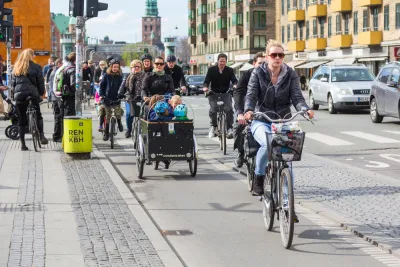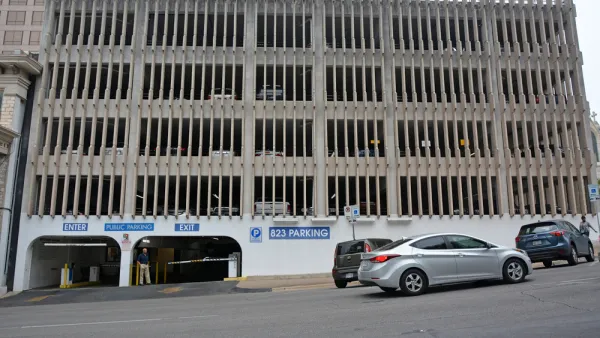Electric vehicles can help reduce greenhouse gas emissions, but not enough to prevent the worst of climate change and not as much as walkable cities with far fewer cars on the road.

The Inflation Reduction Act (IRA) commits the United States to an unprecedented investment in climate action—going well beyond previous efforts from the Obama and Biden administrations, such as the previous clean energy and transportation infrastructure investments included in the American Recovery and Reinvestment Act and the Infrastructure Investment and Jobs Act, respectively.
Those previous examples could also serve as cautionary tales—of incremental steps that failed to solve greenhouse gas emissions while reinforcing some of the systems that have contributed to the climate crisis. All of those efforts have yet to balance the carbon budget yet—will the IRA?
A recent analysis by Yonah Freemark for the Urban Institute identifies cause for concern about the inadequacies of the IRA, noting that while the bill will make significant progress toward the goals set by the Paris Climate Agreement, the bill’s approach to transportation infrastructure, especially its reliance on electric cars, will prove inadequate for the needs of the climate.
“Focusing on electric cars and trucks is unlikely to quickly reduce US emissions and fails to account for the resource intensity of car manufacturing, noncarbon pollution produced by vehicles, and the unsustainable land uses car dependence produces,” writes Freemark.
The first problem is one of affordability, which will make it hard to scale the electric vehicle market commensurate with the need.
Proponents contend the IRA’s consumer tax credits for new electric vehicles could accelerate vehicular fleet electrification. But eligibility requirements are narrow, and most electric cars don’t qualify (the credits cap vehicle costs; require domestic assembly, domestic batteries, and/or battery minerals from certain countries; and exclude high-income purchasers). Electric cars are also more expensive than gas-powered ones, and though some estimates (PDF) project considerable transportation emissions reductions with the IRA, others model just 1–2 percent reductions this decade, in part because even with the vehicle credits, fewer than 20 percent of all vehicles will be zero-emission by 2030.
But there is also a critical angle of direct relevance to land use planning and urban design. The IRA’s reliance on electric cars doesn’t prioritize the more climate friendly approach of getting people out of their cars—on foot, onto bikes, or onto transit.
Freemark also notes that a future of automobile dependency also locks in other negative externalities, such as traffic fatalities, congestion, and air and water pollution. For more on the various negative externalities of electric vehicles, and the need to set a price for their use, with new fees and taxes, see a recent feature Planetizen feature article by Adam Millard-Ball and Michael Manville.
FULL STORY: What the Inflation Reduction Act Did, and Didn’t Do, for Sustainable Transportation

Analysis: Cybertruck Fatality Rate Far Exceeds That of Ford Pinto
The Tesla Cybertruck was recalled seven times last year.

National Parks Layoffs Will Cause Communities to Lose Billions
Thousands of essential park workers were laid off this week, just before the busy spring break season.

Retro-silient?: America’s First “Eco-burb,” The Woodlands Turns 50
A master-planned community north of Houston offers lessons on green infrastructure and resilient design, but falls short of its founder’s lofty affordability and walkability goals.

Test News Post 1
This is a summary

Analysis: Cybertruck Fatality Rate Far Exceeds That of Ford Pinto
The Tesla Cybertruck was recalled seven times last year.

Test News Headline 46
Test for the image on the front page.
Urban Design for Planners 1: Software Tools
This six-course series explores essential urban design concepts using open source software and equips planners with the tools they need to participate fully in the urban design process.
Planning for Universal Design
Learn the tools for implementing Universal Design in planning regulations.
EMC Planning Group, Inc.
Planetizen
Planetizen
Mpact (formerly Rail~Volution)
Great Falls Development Authority, Inc.
HUDs Office of Policy Development and Research
NYU Wagner Graduate School of Public Service




























